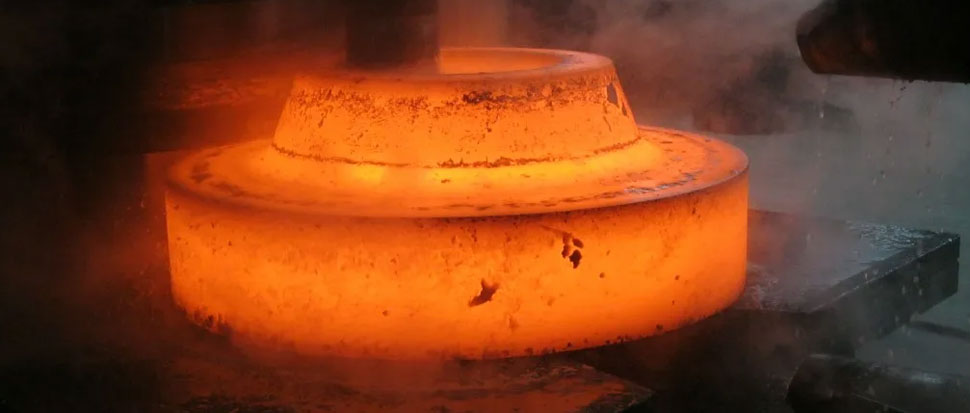FLANGES

FLANGES
Steel flanges are devices used to connect pipes, valves, pumps, and other equipment to form a piping system. They provide a method for easy assembly and disassembly of the piping system, as well as for access to the interior of the system for maintenance and repairs. Flanges can be made from various materials
These materials are chosen based on their compatibility with the fluid or gas being transported, their resistance to corrosion and high temperatures, and other factors specific to the application. There are several types of steel flanges, including:
Weld Neck Flange:
This type of flange is welded to the pipe or fitting, providing a strong and permanent connection. It is commonly used in high-pressure applications and can be used for both high and low temperatures.
Long Weld Neck Flange:
eld Neck Flanges in hard-to-nd metals. Long Weld Neck Flanges have a hub that extends from the Flanges at the surface, which helps in accommodating the pipe more easily.
Slip-On Flange:
This type of flange slides onto the pipe or fitting and is then welded in place. It is a popular choice for low-pressure applications and can be used for both high and low temperatures.
Blind Flange:
A blind flange (also called a ‘closure plate flange’) is installed at the end of a piping system to terminate a pipe. It has no centre hole (bore), so there is no flow through the flange. A blind flange may be used for isolating a pipe, valve, or pressure vessel.
Lap Flange:
Lap Joint Flanges are used with a stub end, which is welded to the pipe. Alloy Steel Lapped Joint Flanges are designed in a way that they swing over the pipe without the need to be welded.
Socket Weld Flange:
This type of flange has a socket for the pipe to fit into, creating a smooth flow path. It is commonly used in high-pressure applications and can be used for both high and low temperatures..
Threaded Flange:
This type of flange has threads on the inside diameter, allowing it to be screwed onto a threaded pipe or fitting. It is commonly used in low-pressure applications and can be used for both high and low temperatures.
Plate Flange:
Manufactured with procedures that are compliant with global flange standards, our Stainless Steel Plate Flanges are free from any cracks and deformities, due to which they last longer and provide an extended service lifespan. Our Carbon Steel Plate special maintenance needs,and added advantage to use them.
Reducing & Expanding Flange:
A complex piping network encompasses pipes of varied sizes, which may also be designed in a manner that these pipes may require frequent changes. Consequently, the pipe’s diameter undergoes regular changes to adjust to the incoming stream of variations.
Male & Female Flanges:
Male & Female Flanges, where the male flange has a face area that extends beyond the normal flange face; the female flange has a depression machined into its face that matches the connecting flange. Our Male &Female Flanges are furnished with a uniform surface and gasket retaining areas.
Tongue & Groove:
Tongue & Groove Flange, the Tongue Flange is manufactured with a raised ring that is machined into its face. The Groove Flange is produced with a matching depression machined onto its face. In order to have a watertight connection, it is important to match the faces of these flanges.
Ring Type Joint Flanges:
(RTJ) that are best-in-class. A Ring type joint flange(RTJ) is a machined metallic ring with a deep groove cut into its face. This groove rests a metal ring which gets compressed when the connecting bolts of the flange are tightened.
Spectacle Flanges:
A spectacle flange is a specialty flange made of two metal discs attached in the middle by a small section of steel. Spectable flanges get their name because they look like a pair of reading glasses, or spectacles.
Orifice Flanges:
An orifice flange is used to measure the flow of the fluid conveyed by the pipeline via a flow nozzle positioned on the flange itself. Pairs of pressure tappings are machined onto the orifice flange, making separate tappings on the pipe wall unnecessary.
- Flanges
- Weld Neck Flanges
- Long Weld Neck Flanges
- Slip On Flanges
- Blind Flanges
- Lap Flanges
- Socket Weld Flanges
- Threaded / Screwed
- Plate Flanges
- Reducing & Expanding
- Male & Female Flanges
- Tongue & Groove
- Ring Type Joint Flanges
- Spectacle Flanges
- Orifice Flanges
- Forged Fitting
- Pipe Fitting
- Ferrule Fitting
- Dairy Fitting
- Outlets


